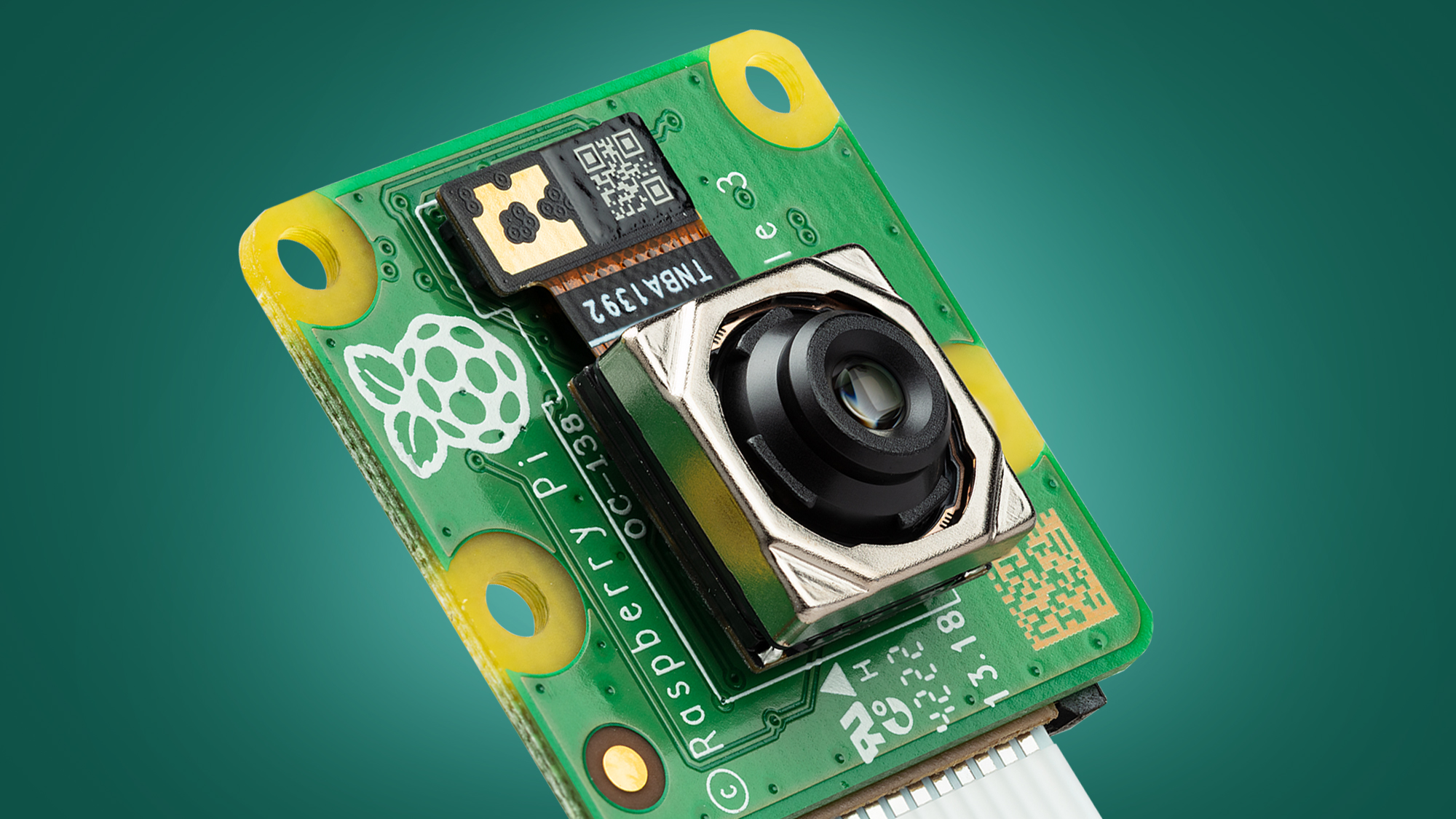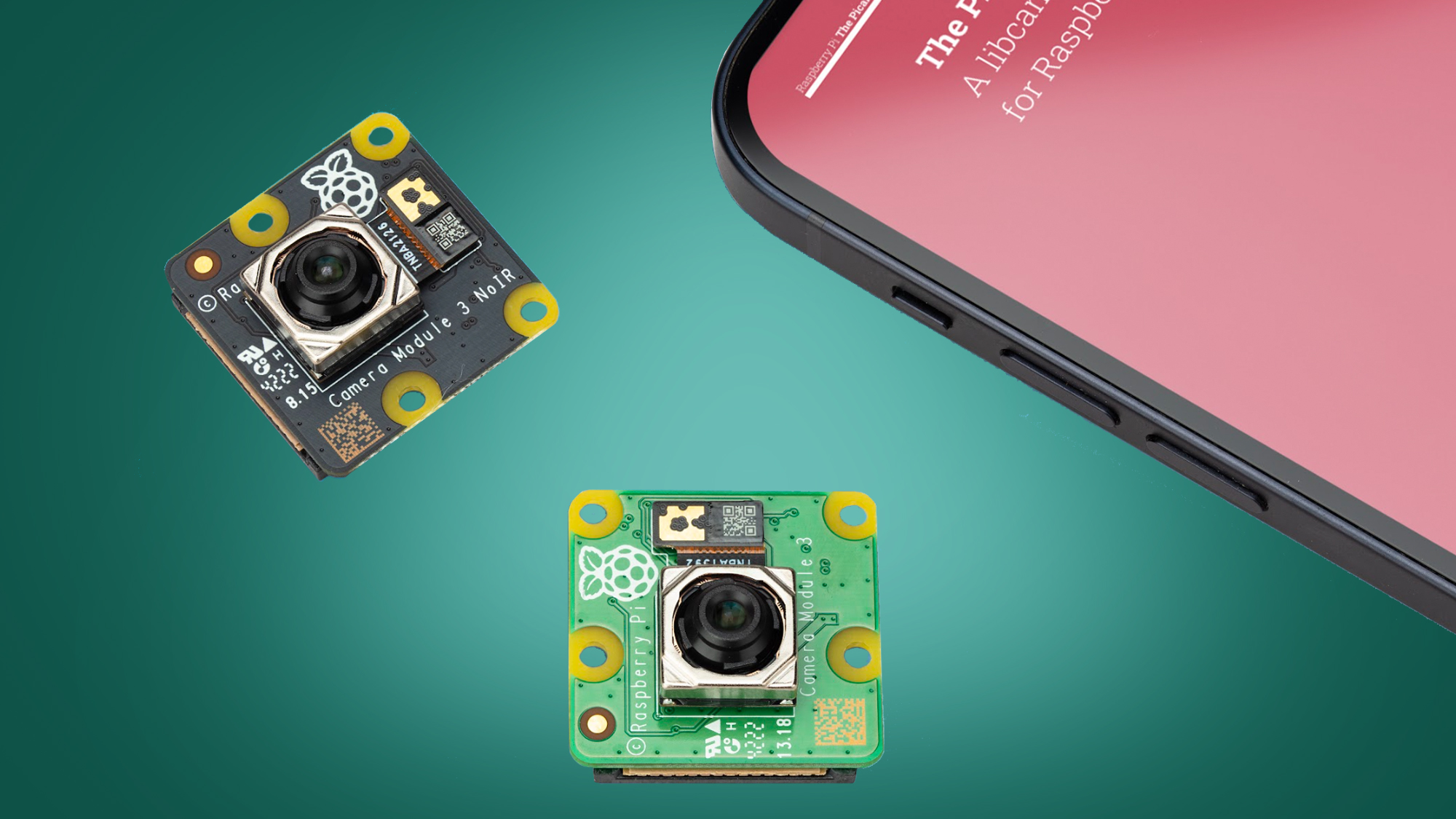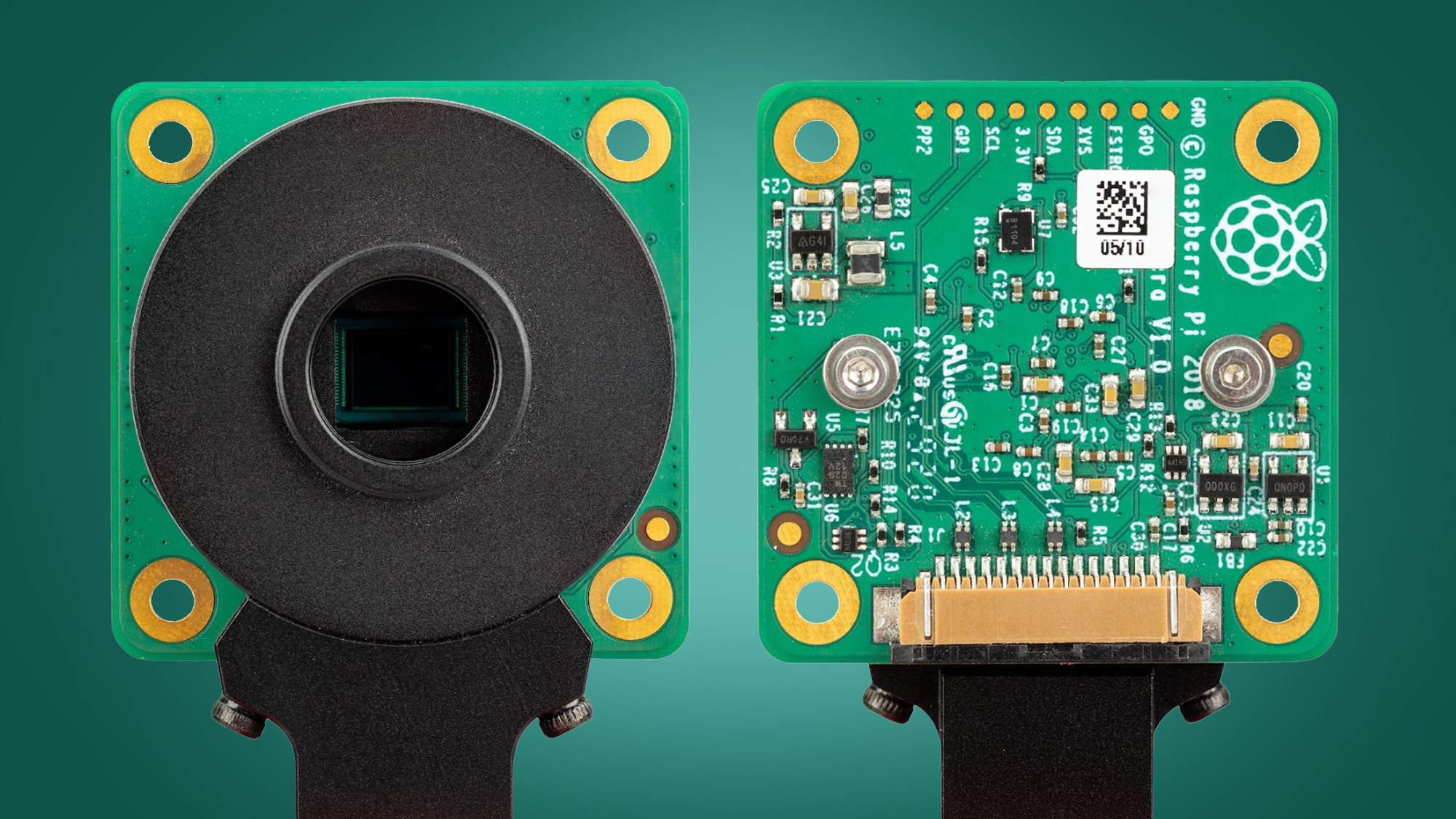Raspberry Pi’s new camera is the DIY project I've been looking for
Autofocus and HDR, you say?

I've been threatening to start a Raspberry Pi project since buying one of the little computers during the original lockdown. While those plans never came to fruition, Raspberry Pi's new Camera Module 3 could just be the spark that relights my DIY camera fire.
Raspberry Pi has made camera modules before – in fact, the first one in 2013 was the company's first official accessory. So why could its third module be the one to convince me to finish a project? Because it's actually a modern digital camera, with autofocus and HDR powers. And it could be the heart of a personalized digicam that I'd actually use, rather than admire on a shelf.
The Camera Module 3 is based on Sony's IMX708 sensor, which is the same as the one in the Oppo Find X2 smartphone. You won't get that phone's imaging processing pipeline, but this is modern hardware – and it's the first official Raspberry Pi camera accessory to come with autofocus.
Yes, we've seen AF sensors before from third-party accessories like Arducam's 64MP Autofocus Camera, but not for the impressively low price of the Camera Module 3. The standard one costs just $25 / £26, but you can also buy a wide-angle version (with a 102-degree field of view, compared to the standard one's 66-degree FOV) for $35 / £36. The latter could be ideal for a homebrewed webcam.
The autofocus looks impressively snappy from the early demos (see below). This is because it uses phase-detection autofocus (PDAF), with contrast-detect AF (usually better for static subjects) offering a handy backup. It would've been pretty embarrassing for Panasonic if Raspberry Pi had beaten it to making a phase-detect AF camera. Fortunately, last week's Panasonic Lumix S5II meant the camera giant got there just in time.
The Camera Module 3's improvements aren't just about autofocus – the overall image quality should be pretty solid and certainly better than those 90s digicams that have become bafflingly popular again. Not only does the IMX708 have a 12MP resolution (seemingly pixel-binned from 48MP), but it also has larger 1.40μm pixels than its predecessor. You can also shoot HD video using the entire sensor area, too.
Even shooting HDR (High Dynamic Range) images is possible if you're prepared to accept a drop to a 3MP resolution. This is because, in challenging lighting, the Camera Module 3 will take simultaneous exposures with different exposure times, then apply tone mapping to get a better-exposed result.
Sign up for breaking news, reviews, opinion, top tech deals, and more.
So, that's the brains of my camera project sorted. The Camera Module 3 is compatible with all Raspberry Pis other than the Pi 400 or original Pi Zero from 2016, which means I can repurpose my Pi 4 Model B – optimistically bought with a HyperPixel screen to be the centerpiece of my Sonos Album Art display – to build a fancy new digital camera. Now it's time to work out the camera body...
Return of the digicam

The downside of the Camera Module 3's increased sensor size (it's a 1/2.43-inch chip versus the 1/4-inch sensor on its predecessor) is that a lot of current cases won't be compatible with it. For example, it won't work with the camera lid on the Raspberry Pi Zero Case.
Still, new cases are surely in the pipeline – I'd love to see an equivalent of the Pi HQ Camera Case. And I could yet be tempted into the ultimate project; building a personalized camera around the Module 3. There are a few 3D printer-friendly designs out there, like the Pikon Camera, and naturally, a YouTuber by the name of Jeff Geerling has already modified it to work with the new Module 3.
That said, the project does involve 3D printing, soldering, and a boatload of patience that could be too much for me at this time of year. So I will likely hold off and wait for a pre-made case to arrive (perhaps a version of the Naturebytes Wildlife Camera Case for a wildlife cam), before I tackle the interface conundrum.

There are a couple of ways to control the Camera Module 3, including the Picamera2 beta that comes as part of Raspberry Pi OS Bullseye. Its latest version delivers autofocus support, but there'll no doubt be some tinkering (and flicking through Raspberry Pi's Camera Software guide) to get the camera up and running.
For me, it's the Module 3's autofocus and HDR powers that give it the edge over Raspberry Pi's other new announcement: the new High Quality Camera module. This now supports M12-mount lenses alongside the C-mount ones that worked natively with the previous version.
Unfortunately, as much as building my own interchangeable lens camera appeals, that module is based on the same camera hardware as before, with no autofocus. So I'll likely stick to the Camera Module 3 and leave the 3D printing for another day – if my previous Raspberry Pi projects have taught me anything, it's to start small before getting carried away with big ideas.

Mark is TechRadar's Senior news editor. Having worked in tech journalism for a ludicrous 17 years, Mark is now attempting to break the world record for the number of camera bags hoarded by one person. He was previously Cameras Editor at both TechRadar and Trusted Reviews, Acting editor on Stuff.tv, as well as Features editor and Reviews editor on Stuff magazine. As a freelancer, he's contributed to titles including The Sunday Times, FourFourTwo and Arena. And in a former life, he also won The Daily Telegraph's Young Sportswriter of the Year. But that was before he discovered the strange joys of getting up at 4am for a photo shoot in London's Square Mile.